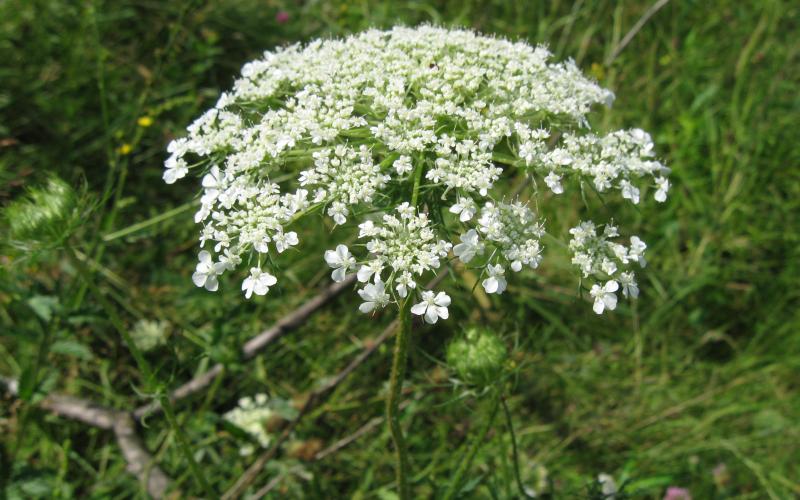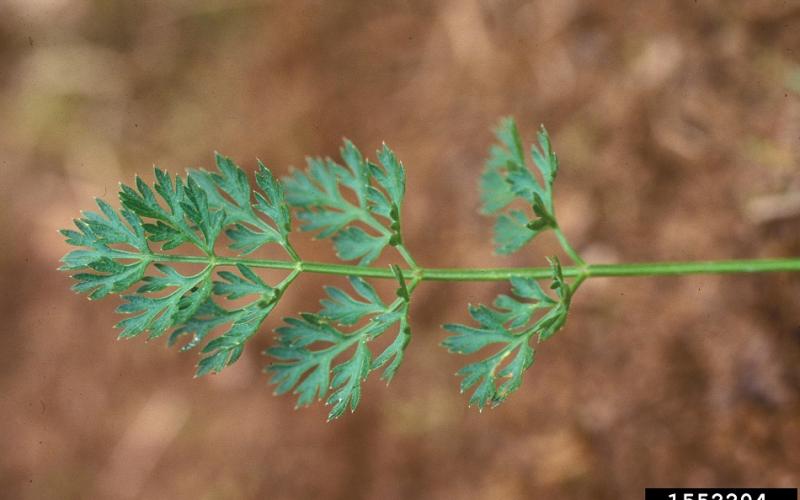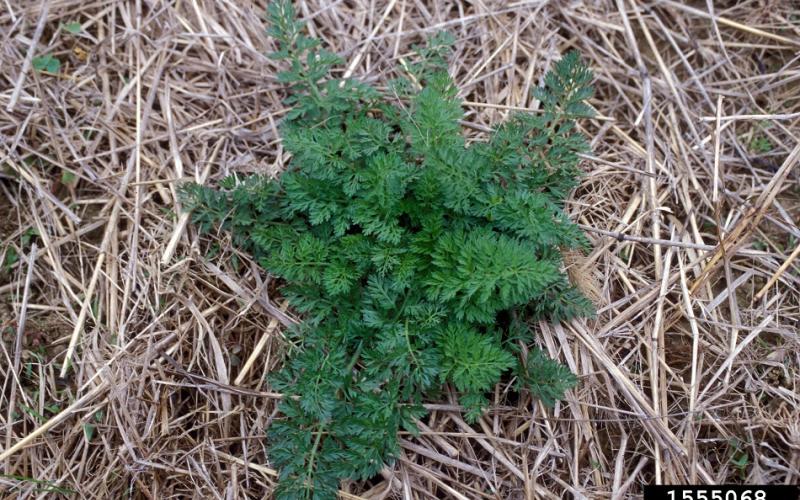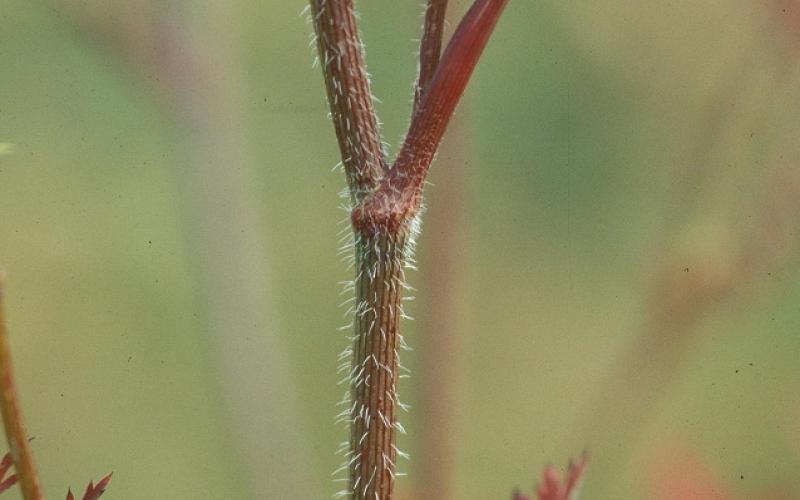Common Name: Wild carrot
Scientific Name: Daucus carota L.
Synonyms: Queen Anne's lace, bird's nest
Legal Status
Propagation and sale of this plant are prohibited in Minnesota. Transportation is only allowed when in compliance with Minnesota Statute 18.82. Although Restricted Noxious Weeds are not required to be controlled or eradicated by law, landowners are strongly encouraged to manage these invasive plants on their properties in order to reduce spread into new areas.
Background
Daucus carota is native to Europe and Asia. It was introduced to North America as a root vegetable and medicinal herb, has become naturalized and is now found in every state. This is a horticultural species that is still intentionally planted with edible cultivars and occasionally included in wildflower mixes. Wild carrot should not be harvested and ingested.
Description
- Wild carrot is an herbaceous biennial in the carrot family (Apiaceae) that starts as a rosette in the first year. It grows between 1- 4 feet and the stem is hairy.
- Leaves are alternate, pinnately divided, feathery and lacy.
- Flowers are tiny and white, and clustered in flat, dense 2-4 inch umbels. Often the umbel has one dark red or purple flower in the center.
- Fruit are brown, oval, flattened, and have hooked spines. When the seed head dries, it will curl up, fall off, and blow about like a tumbleweed, scattering seeds.
- Roots are long tap roots that smell like carrots.
Habitat
This species invades pastures, old fields, prairies, railroad waysides, and road sides. It can be found in sun to partial shade. It generally prefers well-drained, alkaline soils ranging from sand to clay.
Means of spread and distribution
Wild carrot reproduces entirely by seed. The seed is wind- and animal- dispersed. The dried umbels will break off and tumble long distances, spreading seed. The hooked spines on the seed can attach to clothing or animal fur and help to disperse it. One plant can produce up to 40,000 seeds.
Wild carrot is widespread throughout the U.S. It is a problem in parts of Minnesota where its preferred habitat occurs, such as the dry agricultural areas of southeastern and southwestern Minnesota.
Impact
Wild carrot will invade disturbed sites and quickly outcompete other species. It is a threat to native habitats if they are disturbed or newly restored, because it matures faster and grows larger than many native species. However, it tends to fade out as native grasses and forbs become established over time. Prescribed burning can stimulate its growth or create disturbance that can give a new infestation a foothold.
Prevention and management
- For all management options, infestation sites will need to be monitored and treated repeatedly until the seedbanks are depleted.
- Do not plant wild carrot or collect its seed.
- Small infestations can be controlled manually by digging and removing the tap roots. Bag up the plants if they have gone to seed.
- Mowing can be effective to prevent the plants from going to seed. Mowing should be performed in conjunction with another type of management since it does not kill the plant.
- Large infestations can be controlled with foliar herbicide applications. For specific herbicide recommendations, contact your University of Minnesota Regional Extension Educator.
Toxicity
The root looks very much like a domesticated carrot. You must use extra caution when working around wild carrot as it looks very similar to poison hemlock, a deadly plant. It also exhibits mild toxicity to livestock.
The leaves of wild carrot can cause phytophotodermatitis, a rash that occurs when skin touches the sap and then is exposed to sunlight. Wear gloves and cover exposed skin when handling or pulling wild carrot.





